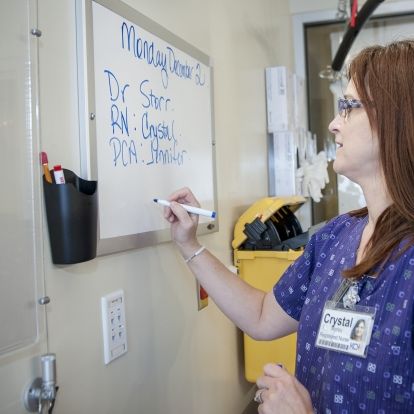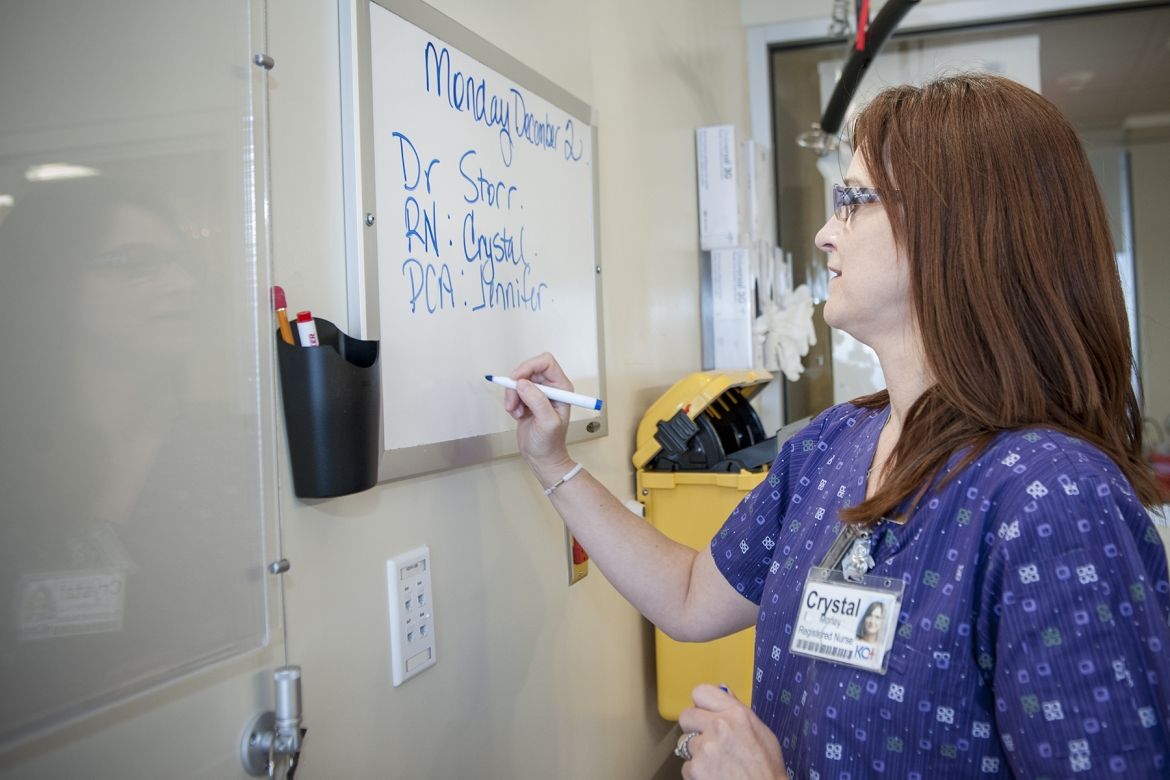Effective immediately masking is required for everyone when present on all inpatient units, in the Emergency Department (ED), the Urgent Care Centre (UCC), and the Children’s Outpatient Centre (COPC).

Patient- and Family-Centred Care is happening every day at Kingston General Hospital and in all parts of the hospital. But it's not always being carried out in the same way, and that's where a new set of five standard practices will now come in handy.
"Staff have been asking for new tools like these to help them perform Patient- and Family-Centred Care," says Daryl Bell, lead of the Patient- Family-Centred Care initiative. "All of these standards were created and refined with the help of some of our Patient Experience Advisors."
The five standards are:
- Use of identification badges consistent with KGH policy
- Communication (introduction and explanation)
- Completion of white boards
- Purposeful hourly rounding
- Patient Feedback Forums
"None of these standards are new to KGH and the great news is we are already doing all of these things. The next step will be to make sure we are all completing them in the same way across the organization so that a patient can expect the same care, no matter what floor they are on," says Bell.
To find out how we are doing, managers and others will be carrying out regular monthly audits, beginning with a baseline study in December. These audits will also help us identify areas which need support in meeting the standards. Our overall corporate goal is to hit an 80 per cent compliance rate for each standard.
On a typical inpatient unit, the manager will be doing the auditing each month, using either paper forms or a new mobile application developed by KGH's Information Management team.
The managers will begin the audit by observing staff, physicians and learners to see if they are wearing unaltered ID badges at chest level where they are clearly visible.
From there, they will pop into patient rooms to check to see if the patient has been seen by a member of the care team at least once every hour and to find out if the staff entering the room introduced themselves and explained why they were there. The manager will also check over the white board to make sure it is completely filled out with information from the latest shift change.
On top of these audits, there will be many more taking place around the hospital in non-patient care areas to assess how we are doing with ID badges in general.
For units, disciplines, or areas of the hospital not meeting the 80 per cent corporate goal, improvement cycles will be initiated by managers to identify opportunities for improvement and support people in meeting the standards.
Gallery


Registered Nurse Crystal Morley fills in a white board with the names of the patient's care team on Kidd 10.



